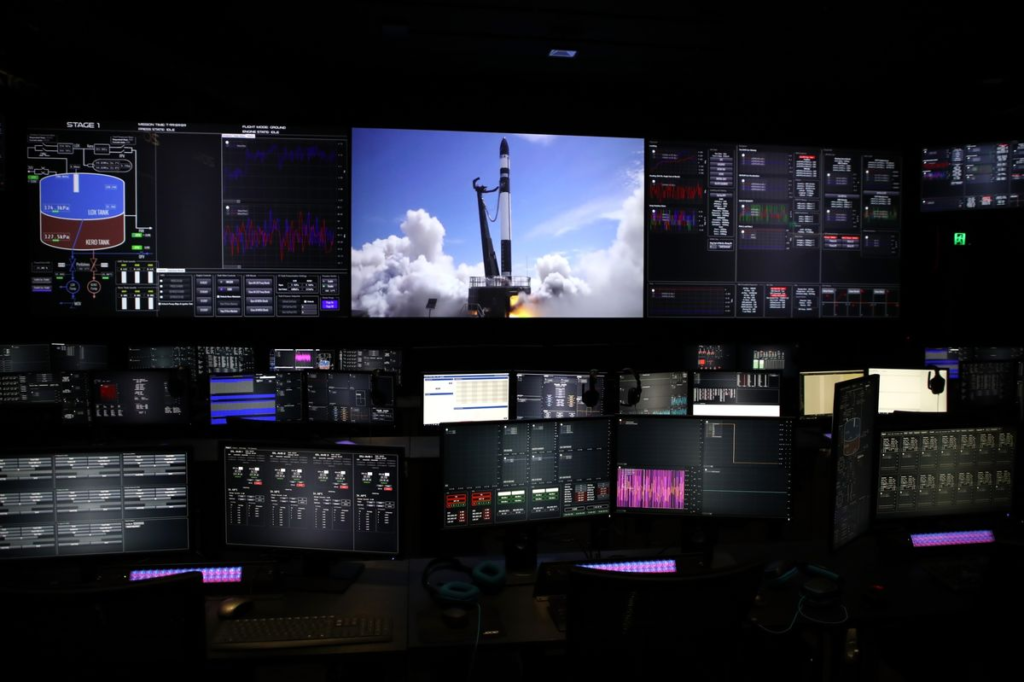
Rocket Lab’s Space Software Continues To Play A Very Important Role
Rocket Lab has managed to grow significantly over the past few years. With this growth, the company continues to work on more ambitious and unique projects. Not to mention the increase in launches and general plans for the future. However, Rocket Lab has also made it clear that they intend to be much more than just a launch provider for different customers.
Through the acquisition of multiple companies in the last couple of years alone, Rocket Lab has not only increased its team but also its capabilities. All of which help with missions like the one we just saw to the Moon. Specifically, the acquisition of ASI and the development of the company’s space software is a big catalyst for future opportunities.
Over the past few days, Rocket Lab has highlighted this in different updates and more. All of which are working towards the future of accessing space. Not to mention future ambitious plans with Neutron, reusability, and more. Here I will go more in-depth into some of the recent updates on Rocket Lab’s software, how it applies to recent and upcoming missions, and what to expect in the near future from the company.
Recent Updates

Just over the last few days, Rocket Lab has provided some updates regarding its space software and the future of the company. Starting on July 13th, Rocket Lab tweeted saying, “We’re proud to have supported on-orbit optical inter-satellite links between the Mandrake 2 satellites under @DARPA’s Blackjack project. Our Colorado team played a leading mission role through our MAX Flight Software, GNC design & analysis, MAX Ground Data System, & mission ops.” More specifically, in June, the two Mandrake-2 spacecraft, Able and Baker, successfully demonstrated closing and maintaining an optical communications link for the full test duration of 40 minutes at a range of 114 km. In that time, more than 280 Gb of data were transferred between the satellites. Rocket Lab played a leading role in the mission through its team at Advanced Solutions Inc. (ASI), a Colorado-based aerospace engineering firm delivering mission proven space software, mission simulation, and testing solutions. Acquired by Rocket Lab in October 2021, ASI has been part of the Mandrake-2 mission from the beginning of the program, contributing to the delivery of space vehicles at the launch site in less than nine months.
Rocket Lab provided the mission MAX Flight Software, Guidance, Navigation and Control (GNC) design and analysis, MAX Ground Data System, and mission operations. Since launch, the spacecraft have been operated from the Rocket Lab Operations Center in Littleton, Colorado. As part of operations, the Rocket Lab team is responsible for daily spacecraft health and status monitoring, payload tasking, and trajectory control between the spacecraft to support the optical cross-link testing. Rocket Lab also supplied the star trackers and reaction wheels for the spacecraft, enabling the high-precision attitude determination and control required to achieve the optical communications link. The spacecraft separation system for the mission was also supplied by Rocket Lab. “This is a significant step toward the realization of global high-speed space network and I could not be more proud of the teams at Rocket Lab and ASI for making it possible,” said Rocket Lab founder and CEO, Peter Beck. “Once again this is a solid demonstration of the efficiencies and reliability delivered by Rocket Lab’s vertically integrated capabilities.”
The next important update came on the 14th, when Rocket Lab tweeted again this time mentioning, “161 cumulative years and counting! Rocket Lab’s MAX Flight Software is now on 53 spacecraft in orbit delivering mission success. This one-of-a-kind software even helped Lunar Photon deploy #CAPSTONE on a path to the Moon for @NASA!” Here is another example of the ASI acquisition and the benefits its providing the company. Included in the 53 spacecraft operating MAX Flight Software is Rocket Lab’s CAPSTONE mission to the Moon for NASA, launched on June 28th, 2022. MAX Flight Software will also feature in several upcoming Rocket Lab missions, including Photons under development for missions to Mars and Venus. “MAX Flight Software is enabling some of the most ambitious space missions in recent history, from Lunar landers and orbiters to asteroid missions and commercial constellations,” said Rocket Lab founder and CEO Peter Beck. He went on to highlight that “Flight software is a vital part of every space mission and the ASI team revolutionized it by creating an off-the-shelf flight software that can be adapted to a wide range of missions. Now with the support and resources of Rocket Lab behind the team, we look forward to delivering on the next 50 missions and then some, delivering industry-leading flight software products to our global customers at scale.” To support growing customer demand for flight software, mission simulation, and Guidance, Navigation and Control (GNC) services, Rocket Lab is expanding into a new space system complex in Littleton, Colorado. The new complex will be established near Rocket Lab’s existing 15,000 sq. ft. location on Shaffer Parkway in Littleton and will add 40,000 sq. ft. of new lab, production, and office space. The complex is expected to be completed by late 2022 and will include two mission operations centers. The expansion will also support team growth. Rocket Lab’s Colorado headcount is expected to double to more than 120 people by early 2023 with roles spanning flight software development, GNC, spacecraft simulation, and systems engineering.
ASI & Space Software

Now that we know more about some of the recent updates regarding this acquisition and software, we can take a closer look at how it works and the history of the deal. As partially mentioned prior, in October 2021, Rocket Lab acquired Advanced Solutions, Inc, (ASI), a Colorado-based aerospace engineering firm delivering mission proven space software, mission simulation, and testing solutions. MAX also known as (Modular Autonomous eXtendible) is much more than just a Flight Software framework. It is also a collection of C++ objects and algorithms uniquely designed for use on nearly any type of aerospace vehicle. Though the typical vehicle application is satellites, they have also applied MAX to payloads, transfer vehicles, lunar landers, space-planes, and atmospheric flight vehicles.
The MAX approach focuses on commonality and configurability. By solving these objectives, MAX sees broad use of common logic; increasing heritage and providing confidence that it will lead to a successful and cost-effective mission. In this year alone, they expect to launch more than a dozen spacecraft running MAX. This includes several unique platforms with a wide variety of applications and requirements. It’s important to point out that MAX features a tool suite with additional software. The On-board Dynamic Simulation System for example, or (ODySSy), is a subset of MAX components providing full life-cycle Built-In Simulation for rapid spacecraft AI&T, a key for maintaining any aggressive schedule. This makes MAX FSW unique in that it allows testing of actual mission sequences on the spacecraft while in various stages of development, assembly, test and launch operations; all without any external support equipment or simulators. During simulation and test, ODySSy is responsible for closing the loop by modeling the dynamics, environments, and hardware of the vehicle. ODySSy can intercept and modify sensor inputs using mathematical models of each sensor. The same concept is applied for handling actuators and other hardware. ODySSy supports the configuration of Hardware-in-Loop and Model-in-Loop on a per-component basis. This allows for systematic testing of specific hardware while maintaining other parts of the system in a modeled environment.
All of which is just another step in Rocket Lab and CEO Peter Beck’s plan for the future of the company. They want to be much more than just a launch provider. Peter Beck founded the company in 2007 with the vision of eliminating the commercial barriers to space. Until recently, rockets have remained prohibitively large and expensive, despite the trend for satellites to become smaller, more capable and affordable. Rocket Lab will help to fulfill the deficit in launch systems by helping to break the cost barrier to commercial ventures and for the emerging satellite constellation markets. They also want to create and provide additional services that are in demand across the industry. This will help make Rocket Lab a one stop shop for customers around the world.
Conclusion
For years now many of us have kept track of Rocket Lab and the company’s progress. During this time they have managed to become a leading launch provider and a consistent option. In addition, over the last few years, the company has also acquired multiple smaller businesses such as ASI. This has increased the Rocket Lab team significantly and provided more capabilities as well. We will have to wait and see how it progresses and the impact it has on the space industry.
